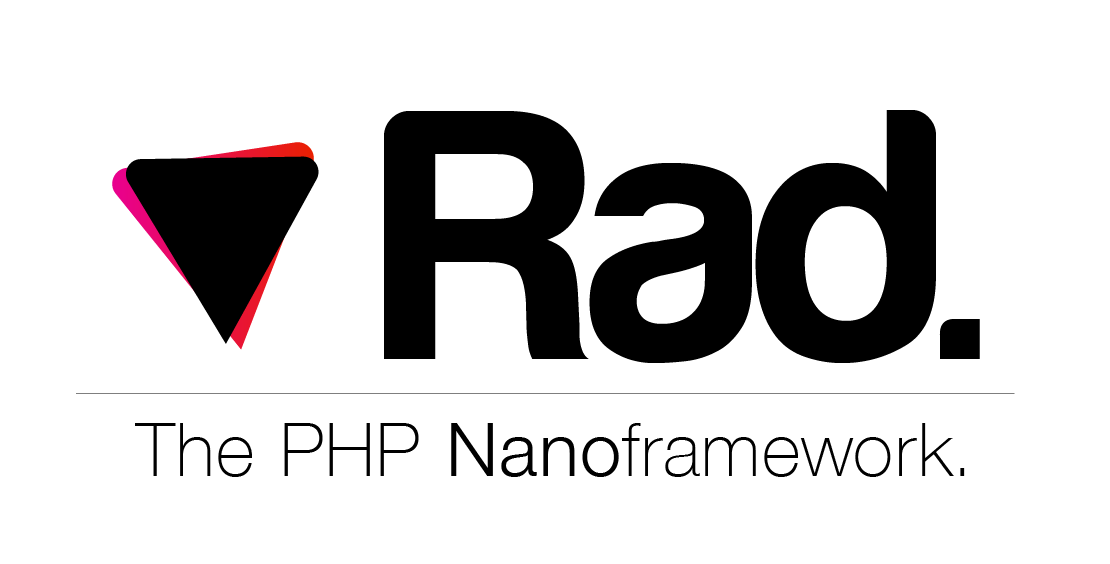 , (*1)
, (*1)
A PHP nanoframework for building APIs at light speed., (*2)
Documentation
Rad provides the following basic classes to get you started building an API., (*3)
Rad\Base
A base class that does a whole lot of stuff I don't have time to write about., (*4)
Rad\Router
A basic but robust router, which takes a HTTP-Request-URI as the constructor argument: __construct($route)., (*5)
Provides various methods to perform actions based on the given URI., (*6)
Example:, (*7)
$router = Rad\Router($currentURI);
$entity = Rad\Base;
$router->get('/users', function ($params, $query) {
$entity->deliver($userClass->getList());
});
$router->get('/users/:userID', function ($params, $query) {
$entity->deliver($userClass->getUser($params["userID"]));
});
Rad\Controller
A class which provides a basic API controller. Automatically gathers data sent to php://input as $this->input, and other cool things I'll write about sooner or later., (*8)
A class which provides a collection of commonly-used (in my experience) utilities, all accessible as static methods., (*9)
Recommended usage:, (*10)
use Rad\Tools as Tools;
class MyClass {
public function example () {
echo Tools::firstName('Austin Billings');
# Returns "Austin"
}
}
See more at their documentation., (*11)
Rad\Courier
A class which extends Rad\Base and lets you easily prepare and send email server-side via Sendgrid, Mandrill, Amazon SES, or vanilla PHP with little to zero effort., (*12)
Quick CLI Example (can easily also be used as a web service)
From terminal:, (*13)
composer require austinbillings/rad
touch MySendScript.php
Now, the fun part:, (*14)
<?php
# MySendScript.php
require('./vendor/autoload.php');
# $blast is the HTML content of our email message
# As long as the first character of the HTML is '<',
# a plaintext version is automatically generated and sent as well.
#
# It can be specified separately by the #setMessage() function,
# or by using an associative array here, like this:
#
# $blast = ["text" => $myTextMessage, "html" => $myHtmlVersion];
#
$blast = file_get_contents(__DIR__ . '/blast.html');
echo "Blast size is ".strlen($blast)." chars\n\n";
# Let's use dat Courier.
$sender = new Rad\Courier([
"system" => "SendGrid", # case insensitive, accepts sendgrid, mandrill, ses, defaults to PHP
"sendGridKey"=> "SG.abcdefghijklm_abcdefgh.1-gabby0123456789abcdefghijklmnopqrstuvwxyz",
"to" => $someListOfEmails, # You can use a string OR an array here
"from" => "austin@awesome-marketing.net", # Address of the SENDER
"name" => "GroundUP Music Festival", # Name of the SENDER
"subject" => "GroundUp Music Festival lands on Miami Beach next week!",
]);
$sender->setMessage($blast);
# ->send() synchronously returns a boolean: true if all sent, false if any failure.
echo ($sender->send() ? 'Sent successfully!' : 'Send failed.')."\n";
# ----------------------------------------------------------------------
# yeah, it's that easy!
# ----------------------------------------------------------------------
Then, simply run your script to send out the email blast., (*15)
php MySendScript.php
> Blast size is 3175 chars
>
> Sent successfully!
Nice!, (*16)
 Wallogit.com
Wallogit.com
 , (*1)
, (*1)